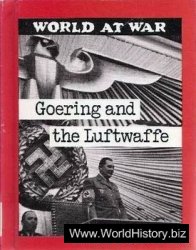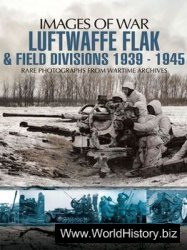Probably no military operation had ever been planned more thoroughly, or with more thought given to possible contingencies that might arise, than the landings on the Normandy beaches. The great oversight, as almost every senior commander has subsequently confessed in his memoirs, was that no-one gave adequate thought to the problem of continuing operations once the beaches were secure, and particularly to the difficulties of fighting in the Norman terrain.
The Allies chose the battlefield chiefly on the basis of beach requirements; the choice entailed inevitable compromises, and planners perforce had to accept as given the terrain that lay behind the beaches. The Caen-Falaise plain, which opened before British Second Army, was open, rolling farm and pasture land that was both dry and firm. It was ideal for armored operations. The drawback was that, equally aware of that fact, the Germans did their best to deny it to the Allies. To fend off attacks by the armored divisions the British landed on the first day, the Germans drew toward Caen all the soldiers that could be spared elsewhere in Brittany, divisions from the south of France, and units from the Netherlands. Caen was the essential connecting link between German forces in Normandy and the Fifteenth Army in the Pas de Calais. To maintain connection between the two armies, Caen had to be held. If that connection were sundered, the German Seventh and Fifteenth Armies could operate together only if they made a long withdrawal from the coast to reestablish contact. Thus the German command concentrated the strongest divisions, and the bulk of their available armor, iVi divisions by the end of June, at Caen and prepared for a hard fight to hold that critical city. In contrast to the 150 heavy tanks (Tigers and King Tigers) and 250 medium tanks confronting the British, the Germans sent the equivalent of only a half division of tanks - 50 medium tanks and 26 Panthers - to defend against American operations in the V and VII Corps sectors.
They could well afford to do so, for when the Americans moved off the beaches, they advanced on to ground that was ideal for a defending force weak in mobility and armor. Passing from the Caen-Falaise plain on the Allied left flank the character of the ground rapidly changed the further one moved to the west. Between the Orne and Vire rivers was a broad mass of broken terrain, the small hills, valleys, and low ridges gradually rising in elevation to the south. Further to the west, at the base of the Cotentin Peninsula, the land was low-lying and very marshy, frequently crossed by slow-moving streams and drainage ditches. Compounding the problem, the Germans had flooded broad stretches of that low country. Approaches to the interior were accordingly limited, with vehicular traffic constricted to a few easily-defended causeways and embanked roads that crossed the flooded areas.
The use to which French farmers had traditionally put the land increased American difficulties. The entire area into which the First Army was attacking was known as the bocage, a general term given to the Norman hedgerow country. Hedgerows were fences, usually half earthen and half hedge, that subdivided the land into individual fields. Those parapets around each plot of land varied from one to four or more feet (.3—1.2m) in thickness and might be anything from 3—12 feet (.9-3.6m) high. On top of the parapets grew characteristically a compacted mass of thorn, brambles, trees and vines that could increase the height of the barrier to 15 feet (4.5m) or more. The irregularly and unpredictably shaped fields, rarely more than 200 yards (180m) wide and 400 yards (360m) long, abutted each other and were linked by trails that were often sunken lanes that ran among them and gave access to openings through the hedges to allow farm traffic to enter the fields.
Such terrain gave the defenders enormous tactical advantages. Each field was, in effect, a small earthen fort, and a connected series of them constituted a fieldwork that could easily be organized for defense in depth. It was a simple matter to position anti-tank guns to cover the approaches to the fields, as American armor quickly found out to its cost. Driving tanks over the hedgerows was no better solution, however, for the tank then exposed its relatively unprotected belly as its front climbed the parapet. Dense vegetation obscured observation and fields of fire and made artillery difficult to employ with any effectiveness. The effects of artillery were also diminished by the many and very effective earthen blast walls that gave protection from individual shell bursts.
To fight in the hedgerows was to make a series of deliberate attacks on a well-prepared defensive position that, once taken, was merely the prelude to yet another well-prepared defensive position. American infantrymen learned with dismay that the bocage, to which they usually referred simply as “this goddam country,” was almost 50 miles (80km) in depth.
Because the hedgerow country severely restricted maneuver, it took away the chief advantage of American tactical organization - mobility. Combat in such terrain assumed many of the aspects of a bar-room brawl. The only advantage was that, when American tanks encountered German tanks, the conditions were more nearly even, for the short combat distances of 150 to 400 yards (135-360m) neutralized the great German advantage of being able to kill at ranges out to 2,000 yards (1,800m) and put the more maneuverable Sherman within a range at which even its weaker 75mm gun could be effective. Finally, Americans found a solution to the mobility problem. Curtis G. Cullin, Jr., a sergeant in the 102nd Cavalry Reconnaissance Squadron, welded steel scrap to the tank to form a pair of scythe-like blades. Using them, the tank rammed itself into the hedgerow and then drove through the wall by main force, carrying a bit of earth and vegetation with it as camouflage and entering the field with its guns firing. Maj. Gen. Walter M. Robertson, commanding 2nd Infantry Division, showed the improvisation to Gen. Bradley, who ordered as many tanks converted as possible. Using such expedients, but also suffering many casualties, the American attack slowly gained momentum.
In the planning for Overlord, some staff officers believed that the bocage would give the Allies ability to hold on to their beachhead against heavy German counterattacks while the British advanced with their armor through Caen, outflanking the difficult country. Eisenhower, Bradley, and Montgomery, deeply concerned with the problems of putting a powerful enough force ashore at Normandy, gave the bocage little thought. But it turned out that the pre-invasion concerns of some senior British officers about the defensive utility of the Norman countryside were well founded. Field Marshal Sir Alan Brooke, Chief of the Imperial General Staff, and Lt. Gen. Frederick E. Morgan, as COSSAC one of the chief British Overlord planners, had both warned of serious difficulties to be anticipated in the hedgerows.
Unfortunately for Eisenhower, the Allied attack appeared headed for stalemate not just in the bocage, but also in the more favorable terrain around Caen. By the end of July, around D+50, his troops stood on ground they were supposed to have captured by D+5. These difficulties had not been apparent on June 6—7. After the euphoria of the successful landings, the hard fighting and slow progress behind the beaches came as a shock that could not be explained entirely by the stiffness of the German resistance and the difficulty of the terrain.




 World History
World History









